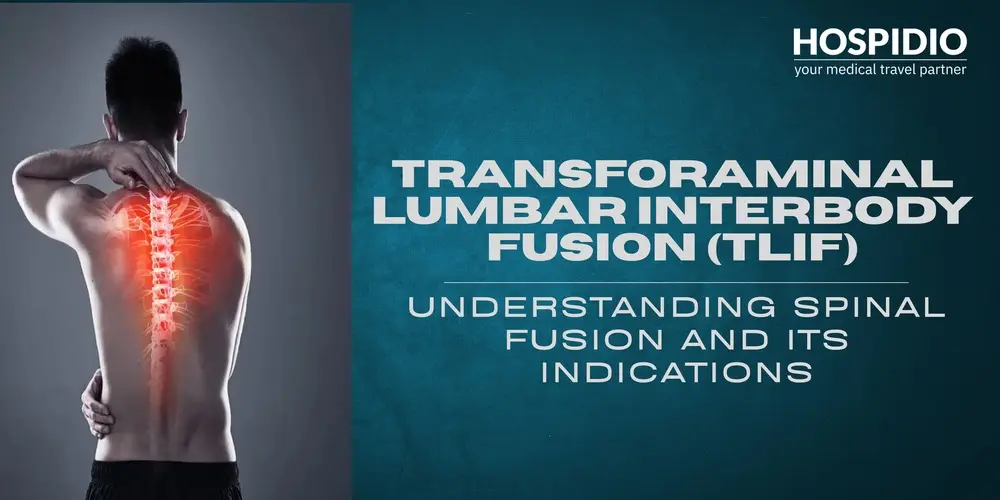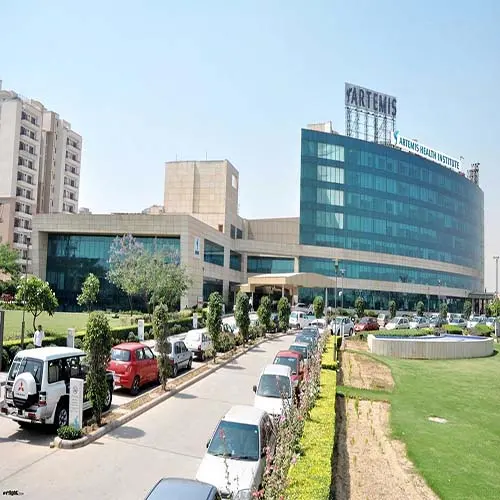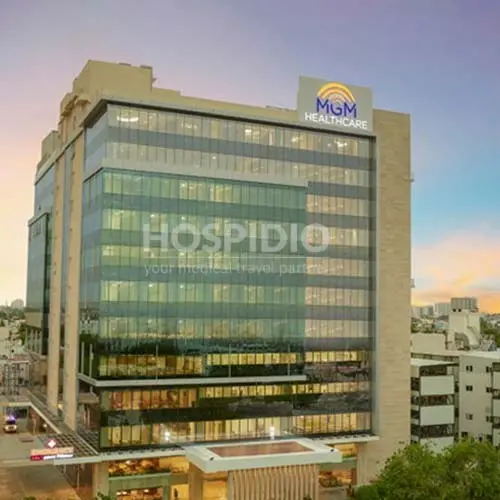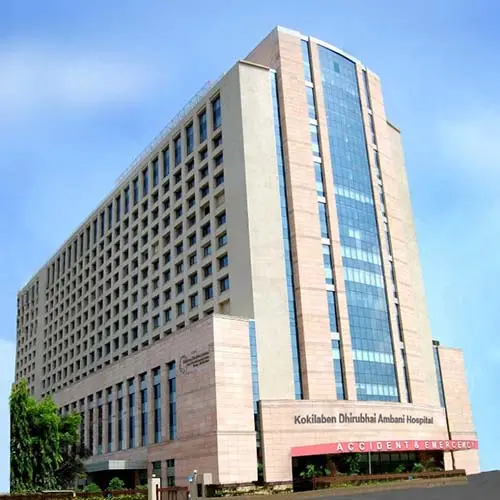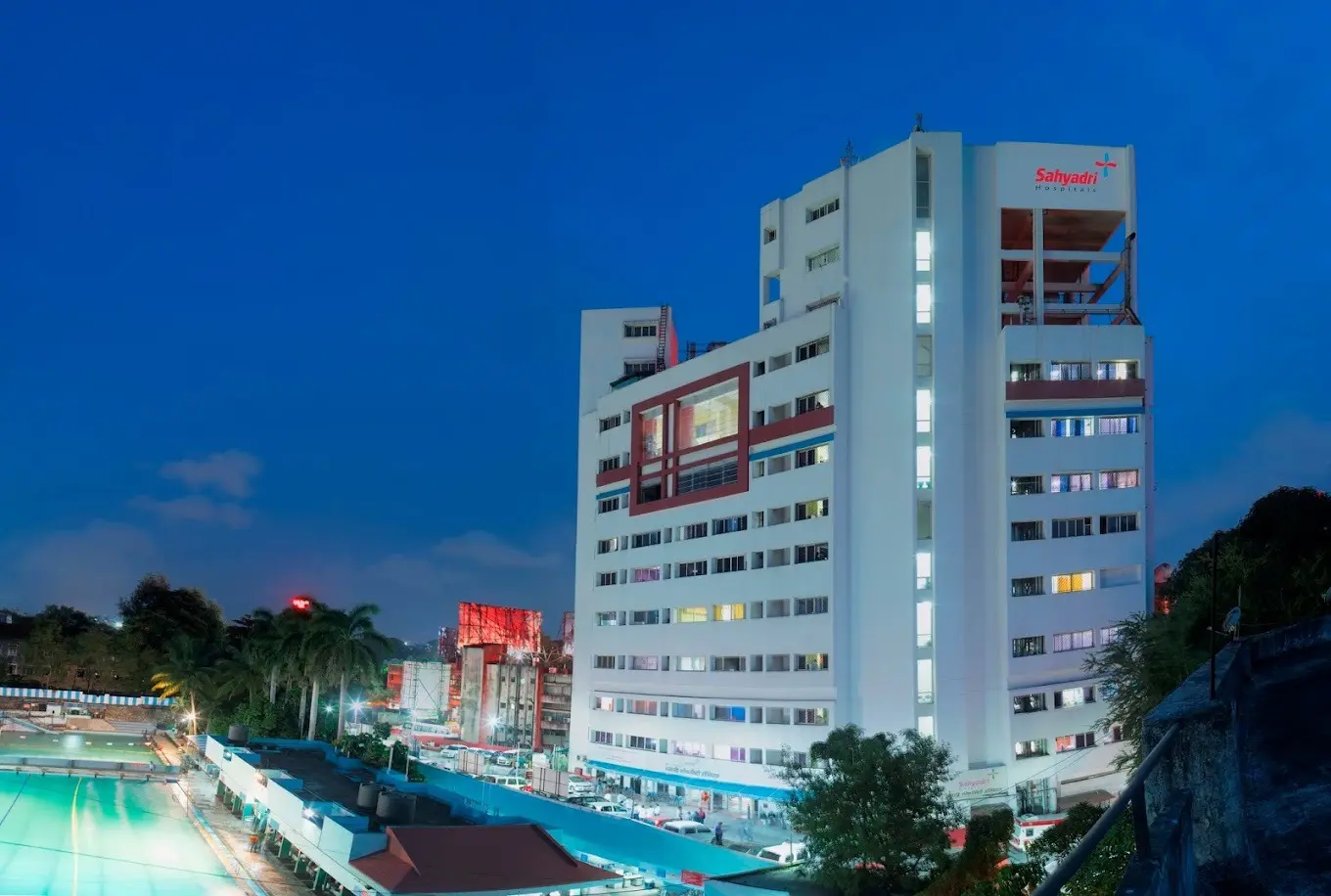Lower back pain can become debilitating when it begins to impact mobility and quality of life. When conservative treatments fail, spinal fusion surgeries such as Transforaminal Lumbar Interbody Fusion (TLIF) provide hope for long-term relief. TLIF is the most effective surgical method for addressing certain degenerative conditions of the lumbar spine.
Get a free cost estimate
In this treatment guide, we'll learn everything there is to know about TLIF—from purpose and symptoms to risks, diagnosis, treatment, and recovery.
What is TLIF?
According to Cleveland Clinic, Transforaminal Lumbar Interbody Fusion (TLIF) is a type of spinal fusion operation performed to stabilize the lumbar spine or lower back by joining two or more vertebrae together. The process involves removing a damaged intervertebral disc and inserting a bone graft or cage filled with bone material to encourage the fusion of nearby vertebrae.
Unlike conventional spinal fusion techniques, TLIF approaches the spine from a more lateral (side) angle through the foramen, a natural pathway that permits nerves to exit the spinal canal. This minimizes disruption to the back muscles and spinal structure, leading to quicker recovery, reduced bleeding, and decreased post-operative discomfort.
Why TLIF May Be Necessary?
TLIF is most often recommended for patients with:
1. Degenerative Disc Disease
When discs that are found between vertebrae break down with aging or repetitive stress, they can lead to instability, pain, and compromised spinal mobility.
2. Spondylolisthesis
This condition is when one vertebra moves forward over another, producing spinal instability and nerve compression and in most cases is treated well with TLIF.
3. Spinal Stenosis
Spinal canal narrowing may compress nerves and lead to pain, numbness, or weakness—particularly in the legs.
4. Recurrent Disc Herniation
Patients with prior lumbar surgery but ongoing disc-related complaints may be helped by TLIF.
5. Spinal Instability or Trauma
Traumatic or tumor-induced fractures or instability of the spine can be treated with fusion to correct structural integrity.
Also Read: TLIF Spinal Fusion Surgery Cost in India
Symptoms That May Indicate Need for TLIF
TLIF is not a first-line treatment. It's usually reserved when patients have persistent symptoms that don't respond to non-surgical options such as physical therapy or pain management.
Some common symptoms are indicated in the table below:
| Symptom | Description |
| Chronic lower back pain | Persistent or worsening lower back pain that lasts for more than six months and affects day-to-day functioning is a primary symptom. This pain is often mechanical in nature—aggravated by movement and relieved by rest. |
| Radiating pain down legs (sciatica) | Pain that radiates from the lower back down one or both legs (commonly known as sciatica) may indicate nerve root compression due to disc herniation, spondylolisthesis, or spinal stenosis. TLIF helps by decompressing the nerves and stabilizing the spine. |
| Numbness or tingling in lower extremities | Tingling, burning, or “pins and needles” sensations in the legs or feet often accompany nerve compression. These sensory changes may worsen with standing, walking, or bending. |
| Weakness in the legs or feet | Progressive weakness in the legs or feet, difficulty lifting the toes (foot drop), or frequent tripping may indicate serious nerve involvement requiring surgical attention. |
| Trouble walking or standing for extended periods | Spinal instability may lead to a feeling of “giving way” or unsteadiness while walking or standing, especially during prolonged physical activity. |
| Loss of bladder or bowel function (in extreme cases) | In rare but severe cases like cauda equina syndrome, patients may experience incontinence or loss of bladder/bowel control. This is a surgical emergency, and TLIF may be part of the intervention. |
| Instability while standing or walking | Spinal instability may lead to a feeling of “giving way” or unsteadiness while walking or standing, especially during prolonged physical activity. |
Rare Risks of TLIF
Although TLIF is a commonly used and normally safe surgical technique, there are risks involved with it, as with any major surgery.
1. Infection
Post-surgical infections can occur at the incision site, around the spinal hardware, or deep within the intervertebral space. Though rare, infections may require antibiotics or even revision surgery in severe cases.
2. Bleeding
Though TLIF is less invasive than some other fusion methods, blood loss during or after surgery is still a possibility. Proper pre-surgical screening and intraoperative techniques help minimize this risk.
3. Nerve Damage
During disc removal or hardware placement, nearby spinal nerves may be irritated or damaged, leading to temporary or, rarely, permanent symptoms such as numbness, tingling, or motor weakness.
4. Non-Union (Pseudoarthrosis)
Fusion failure occurs when the bone graft doesn't integrate properly with the surrounding vertebrae, resulting in continued movement at the operated segment and persistent pain. Smoking, diabetes, and poor bone quality are contributing factors.
5. Hardware Failure
Screws, rods, or cages used in TLIF may loosen, shift, or break. Hardware failure may necessitate revision surgery to replace or reposition the implants.
6. Adjacent Segment Disease
Fusion of one segment can lead to increased biomechanical stress on adjacent vertebrae, accelerating their degeneration. ASD may eventually require additional surgeries.
7. Risks of Anesthesia
Patients with cardiac, respiratory, or metabolic disorders may experience complications related to general anesthesia, including allergic reactions, nausea, or cardiovascular events.
8. Chronic Pain or Failed Back Surgery Syndrome (FBSS)
In some cases, pain persists even after technically successful surgery. This may result from scar tissue formation, ongoing nerve damage, or incorrect diagnosis.
9. Dural Tear (Spinal Fluid Leak)
The dura—the protective covering of the spinal cord—can be punctured during surgery, leading to cerebrospinal fluid leakage. This may require repair and temporary bed rest post-surgery.
Things You Should Monitor After TLIF
Some discomfort may occur right away after the surgery, while others may occur weeks or months post-op. You should monitor the following early complications and report to the surgeon if needed:
- Infection in the wound
- Too much pain or swelling
- Blood clots
- Leakage of spinal fluid
Rare Long-term Complications:
- Failed back surgery syndrome (FBSS)
- Chronic nerve pain
- Restricted range of motion in the lower back
- Implant loosening or fracture
Prevention of such complications is largely possible with proper follow-up and compliance with rehabilitation programs.
Also Read: Spinal Decompression Surgery Cost in India
Diagnosis and Evaluation for TLIF
Prior to the suggestion of TLIF, a spine expert performs a detailed evaluation, which includes:
1. Medical History & Physical Exam
It is important to understand the patient's past history of back pain, previous surgeries, trauma, and neurological symptoms.
2. Imaging Tests X-rays
Evaluate spinal alignment and stability through:
- MRI (Magnetic Resonance Imaging): Soft tissues, nerves, and disc condition are visualized
- CT Scan: Provides precise views of bone and fusion condition
- Myelogram: Spinal cord and nerve root problems are emphasized with the help of a contrast medium
3. Nerve Studies
EMG or nerve conduction studies can be employed to detect individual nerve compression or injury. TLIF is only planned after careful evaluation and after failure with conservative therapy.
How is TLIF Performed?
The TLIF procedure is a technically advanced spinal fusion surgery that focuses on stabilizing the spine and decompressing spinal nerves. Here's a comprehensive look at how the surgery is planned and performed.
Preoperative Preparation
A thorough evaluation is performed to assess fitness for surgery, including cardiac and pulmonary screening if needed.
- Recent MRI, X-rays, or CT scans guide the surgeon in planning the approach and level of fusion.
- Blood thinners are usually stopped a few days before surgery.
- Patients are also advised to stop smoking to enhance fusion rates.
- Patients are instructed to avoid food or drink 6–8 hours before surgery.
Step-by-Step Surgical Procedure
Anesthesia and Positioning
The patient is given general anesthesia and placed face-down (prone) on a special operating table to allow access to the spine.
Incision and Exposure
A small incision is made slightly off the midline of the back. Through a transforaminal approach (between the spinal nerves), the surgeon accesses the intervertebral disc space while minimizing disruption to muscles and ligaments.
Disc Removal (Discectomy)
The damaged or degenerated disc is carefully removed, and the disc space is prepared for fusion. This step also allows nerve roots to be decompressed.
Bone Grafting and Implant Insertion
A cage or spacer filled with bone graft (either the patient’s own bone, donor bone, or synthetic material) is inserted into the cleaned disc space. This serves as a scaffold for new bone growth and fusion.
Stabilization
Pedicle screws and connecting rods are placed into the adjacent vertebrae to hold the spine in proper alignment and prevent motion while fusion occurs.
Closure
The surgical area is irrigated, and the incision is closed in layers. A sterile dressing is applied.
Postoperative Care and Recovery
- Most patients remain hospitalized for 2–4 days, depending on their health status and response to pain management.
- Pain is managed with oral or intravenous medications, often transitioned to oral analgesics within a day.
- Patients are encouraged to start walking within 24–48 hours to promote circulation and reduce the risk of complications.
- A rehabilitation plan is initiated either in the hospital or shortly after discharge to help rebuild strength, posture, and flexibility.
Fusion and Long-Term Recovery
- Bone Fusion Timeline: The graft gradually fuses the two vertebrae over 6–12 months.
- Follow-Up: X-rays or CT scans are used to monitor fusion progress. Hardware integrity and alignment are also assessed.
- Return to Work: Depending on the patient’s occupation, return to work may range from 4 weeks (desk jobs) to 3 months (manual labor).
- Lifestyle Modifications: Patients are advised to avoid smoking, maintain a healthy weight, and practice good posture and core strengthening to protect their spine.
Top-Rated doctors for TLIF in India
Transforaminal Lumbar Interbody Fusion (TLIF) stands as a transformative surgical option for individuals suffering from chronic lower back pain, spinal instability, or nerve compression. When conservative treatments fail, TLIF offers a chance at lasting relief, improved mobility, and a return to normal life. However, successful outcomes depend on accurate diagnosis, skilled surgical execution, and a structured recovery plan.
Top Hospitals with the Best Spine Surgeons
At HOSPIDO, we specialize in connecting patients with India’s top spine surgeons and internationally accredited hospitals known for performing advanced procedures like TLIF. From initial consultation and hospital selection to visa assistance and post-operative care, Hospidio is your trusted partner in spinal health and medical travel. If you're considering TLIF or looking for expert guidance on spine treatment, let Hospidio help you take the first step toward a pain-free life.
Things To Consider While Choosing TLIF Surgeon in India
Here's a concise, clear, and deeply informative table outlining the key factors that you should consider while choosing a doctor for spine surgery:
Factor | What to Look For |
Qualifications & Credentials | MBBS, MS (Orthopedics) or MCh (Neurosurgery); Fellowships in Spine Surgery from reputed institutions (India or abroad). |
Experience in TLIF Procedures | Surgeon should have performed at least 100+ TLIF surgeries, including complex/revision cases; check years of active spine surgery practice. |
Specialization | Prefer Spine Specialist (Orthopedic Spine Surgeon or Neurosurgeon) rather than general orthopedic surgeon. |
Hospital Affiliation | Choose surgeons affiliated with NABH/JCI-accredited hospitals known for spine care, such as Apollo, Fortis, Max, Manipal, Medanta, etc. |
Technology & Approach | Surgeon should be skilled in minimally invasive TLIF (MIS-TLIF), use of neuro-navigation, O-arm, intraoperative neuromonitoring, etc. |
Patient Reviews & Outcomes | Check Google, Trust Pilot or hospital website reviews, and inquire about patient satisfaction rates, especially long-term recovery and pain relief. |
Multidisciplinary Support | Access to a team including neurologists, physiotherapists, pain specialists, and anesthesiologists ensures comprehensive care. |
Infection Control & Safety | Ensure surgeon practices at facilities with low infection rates, strict sterilization protocols, and post-op ICU care if needed. |
Second Opinions Offered | Good surgeons encourage transparency and second opinions, reflecting confidence in their approach. |
Cost Transparency | Ensure clarity on surgical package, implant costs, hospitalization, and post-op follow-up; avoid hidden charges. |
References:
- Cleveland Clinic
- Spine-Health
- Saint Luke's
FAQs
An ideal patient is one with chronic lower back pain from disc degeneration, instability, or nerve compression who has not been relieved by conservative care.
Yes, it can be done with a minimally invasive technique, resulting in short recovery times and decreased post-operative pain.
This varies with the type of work. Desk jobs that are light can return in 4–6 weeks, while jobs involving physical labor can take up to 3 months to recover.
A spinal segment that is fused will lose its independent motion, but most patients do not appreciate a significant loss of flexibility, particularly when only one or two levels are fused.
Yes, revision surgery can occur in the event of non-union, hardware failure, or continued symptoms.
Stopping smoking, being within healthy weight, undergoing routine physical therapy, and refraining from heavy lifting are important for proper healing and long-term outcome.
Yes, most insurance companies pay for TLIF if medically necessary. Pre-authorization is usually requested.
Baani Singh
Author
Baani Singh is a Trainee Intern specializing in Content and Brand Management at HOSPIDIO. With a keen interest in healthcare communication, she contributes to creating informative and engaging content that bridges the gap between medical services and patients seeking treatment abroad. Her work supports HOSPIDIO's mission to provide accessible and transparent medical travel solutions.
Guneet Bindra
Reviewer
Guneet Bhatia is the Founder of HOSPIDIO and an accomplished content reviewer with extensive experience in medical content development, instructional design, and blogging. Passionate about creating impactful content, she excels in ensuring accuracy and clarity in every piece. Guneet enjoys engaging in meaningful conversations with people from diverse ethnic and cultural backgrounds, enriching her perspective. When she's not working, she cherishes quality time with her family, enjoys good music, and loves brainstorming innovative ideas with her team.

